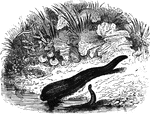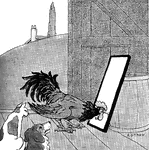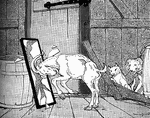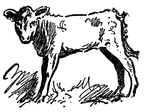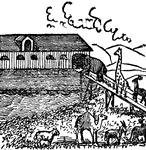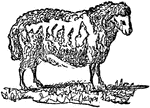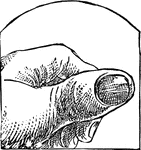
Long-Eared Bat
"Bat is the common name of all animals of the class mammalia which are furnished with true wings, and…

Boat Fly
"They carry the air required for their respiration in a space left for this purpose between the wings…
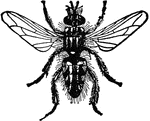
Blow Fly
"Blow Fly is the name popularly given to such two winged flies as deposit eggs in the flesh of animals,…
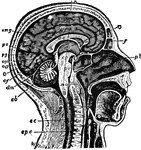
Human Brain
"The Brain is the encephalon, or center of the nervous system and the seat of consciousness and volition…

Cheese-mite
"The Cheese-mite, Acarus domesticus, and others are parasitic upon or beneath the skin of man…

Wood-louse
"The family Oniscidae, including the well-known Wood-Louse, Oniscus murarius, and many similar…

King crab
"It is among the largest of crustaceous animals, sometimes measuring as much as two feet in length.…
Wheel, animalcule
"These animals [the Rotifera], called Wheel Animalcules, were formerly included among the Infusoria,…
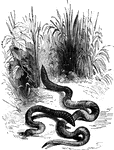
Earth-worms
"The bodies of these animals are of a cylindrical form, somewhat pointed at the anterior extremity,…
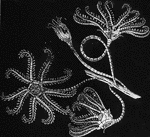
Encrindae
"Theses animals were all supported upon a long stalk, at the extremity of which they floated in the…

Medusa's head pentacrinus
"This may be considered as one of the greatest wonders of nature, it being a real animal, having blood,…

Head of Chameleon
"Chameleon is a genus of reptiles belonging to the Saurian or lizard-like order, a native of parts of…

Coral
"Coral is the name applied to the stony structures secreted by many of the actinozoa, and applied to…
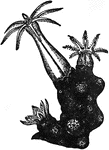
Coral
"Coral is the name applied to the stony structures secreted by many of the actinozoa, and applied to…

Crawfish
"Crawfish, or Crayfish is a name of various crustaceous animals, the common crawfish being the river…

Gopher
"Gopher is a name given by the early French settlers in the United States to various animals which honeycomb…

Hedgehog
"Hedgehog is a quadruped distinguished by having the body covered with spines instead of hair. The skin…
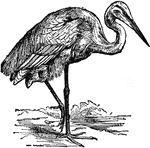
Heron
"Heron is the common name of birds of the genus Ardea. The herons are distinguished by having a long…
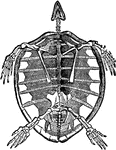
Skeleton of Turtle
"Turtle is, in zoology, the popular name for any species of the Cheloniidæ. They may be distinguished…

Vicuna
"Vicuna is a native of the most elevated localities of Bolivia and northern Chile. It is very wild,…
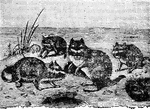
Viscacha
"Viscacha is a stout-built rodent, resembling a marmot, from 18 inches to two feet long, exclusive of…
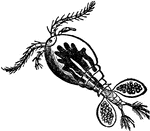
Cyclops communis Water Flea
"Water Flea is a popular name for minute aquatic Crustaceans such as daphnia, cypris, and cyclops. In…
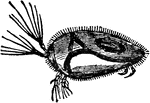
Cypris Unifasciata Water Flea
"Water Flea is a popular name for minute aquatic Crustaceans such as daphnia, cypris, and cyclops. In…

Daphnia Pulex Water Flea
"Water Flea is a popular name for minute aquatic Crustaceans such as daphnia, cypris, and cyclops. The…

Tree-coral
"These animals are generally called Tree-corals, on account of the forms of the polypidons…

Sea-pen
"The main stem of the polypidom of these animals is fleshy, but is furnished with an internal bony axis,…
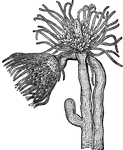
Tubularia coronata
"The Tubularidae are a family of hydroid polypes are for the most part social animals, frequently possessing…

Octopus
"The Octopus is the typical genus of the family Octopodidæ. The body is oval, warty, or cirrose,…
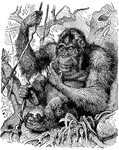
Orang Outang
"The Orang Outang is the Mias of the Dyaks; also known as the 'wild man of the wood.' It is a dull,…
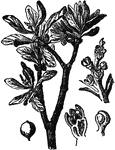
Loranthus Europaes
"Parasitic Plants are those which are unable to nourish themselves and prey upon other plants or animals;…
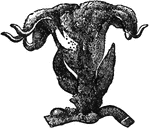
Brugmansia Zipple
"Parasitic Plants are those which are unable to nourish themselves and prey upon other plants or animals;…
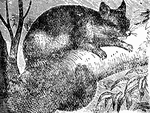
Phalanger
"The Phalanger is a small woolly-coated marsupial, with opposable great toes, which are destitute of…

Remora
"The Remora, the sucking-fish, or sucker. By means of the suctorial disk, a transformation of the spinous…

Hooded Seal
"The Seal, of the family Phocidæ, or seal tribe, are, of all four-limbed mammiferous animals,…
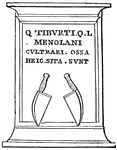
Culter
"A knife with only one edge, which formed a straight line. The blade was pointed, and its back curved.…

Galea
"A helmet; a casque. The helmet was originally made of skin or leather, whence is supposed to have arisen…
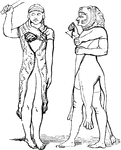
Greek soldiers
"'Exulting in the tawny covering of a she-wolf, such as his foster-parent was.' Alluding to the custom…
Retis
"A net. In hunting it was usual to extend nets in a curved line of considerable length, so as in part…

Rhyton
"A drinking-horn. Its original form was probably the horn of the ox, but one end of it was afterwards…

Signa Militaria
"Signa Militaria, military ensigns or standards. The most ancient standard employed by the Romans is…
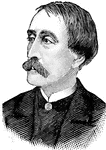
Henry Bergh
Bergh founded the American Society for the Prevention of Cruelty to Animals (ASPCA) in 1866.
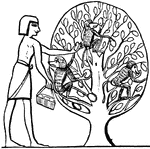
Fruit Gathering Monkeys
"Monkeys appear to have been trained to assist in gathering fruit; and the Egyptians represent them…

Egyptian Couch
"The Egyptian couches were executed in great taste. They were of wood, with one end raised, and receding…

Egg
A body formed in the females of birds, and some other animals, from which their young is produced.
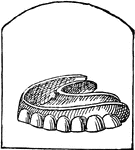
Teeth
The series of small bones attached to the jaws of animals, or human beings, which serve the purpose…
